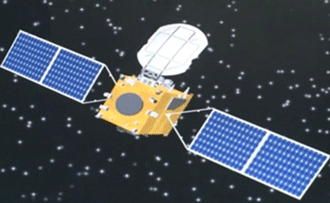Most of us know about the “war” raging in cyberspace. We hear about government-sponsored hacks and data breaches nearly every week. Cyberwarfare is now a fact of daily life for every business and government.
Those who understood this early were able to profit from the trend. Companies like CrowdStrike Holdings (CRWD) and Fortinet (FTNT) are publicly traded defenders of the internet. Investments from the public helped these businesses scale and provide critical services to our economy.
The growth of cybersecurity was an obvious trend. Early investors who backed the right management teams did well.

Today, a new theater of war between governments has opened. Space itself is the new front line for global conflict.
Russia’s space-based military tech is all over the news. Earlier this month Rep. Mike Turner, who serves as chairman of the US House Intelligence Committee, warned about a “serious national security threat” stemming from Russia’s space capabilities and demanded the White House declassify information about it.
The White House then confirmed that Russia has a “troubling” anti-satellite weapon. The Kremlin, of course, called this all a “ruse” to increase US support for Ukraine.
US Navy Admiral Christopher Grady says, “Space has emerged as our most essential warfighting domain.”
The Macro Team and I have been following this for months, especially after my conversation with Dr. Pippa Malmgren here on Global Macro Update. Pippa said China has a satellite (the Shijian-17) with a robotic arm that can approach another satellite in space, grab it, and throw it into outer space.

China’s Shijian-17 satellite; Source: Gunter’s Space Page
Here’s General James H. Dickinson’s take on China’s space goals:
Beijing actively seeks space superiority through space and space attack systems. One notable object is the Shijian-17, a Chinese satellite with a robotic arm.
Military experts have said a modern-day war between superpowers (aka, the US versus China and/or Russia) could be won or lost in the first few minutes. Each side would try to knock out the other’s critical communication infrastructure, like our GPS.
It’s easy to forget that GPS is foremost a military tool. The US military needs it to pilot unmanned aircraft, to guide bombs and missiles, and so on. But our GPS satellites are essentially sitting ducks.
Russia has already been accused of rampant GPS jamming during its war against Ukraine. It’s also used anti-satellite weapons to intentionally destroy its own obsolete satellites. This has left a cloud of floating space debris, or “space shrapnel,” that’s threatened the International Space Station and interfered with other nations’ abilities to operate in key space orbits.
Here’s the risk: If an enemy state were to disable location technology like GPS, it could render a rival’s entire military powerless. Guided missiles aren’t much use if you cannot guide them. And while it is possible to navigate without GPS, just think about the last time you pulled out a map to get to your destination, let alone a sextant. If a force cannot navigate or locate targets, they’ve lost the battle before it’s begun.
Defense in the “Third Space Age”
General John Shaw, who served in the US Space Command, says we’re now in “the third space age.” In this new era, the Department of Defense knows it needs better technology to counter space-based threats from Russia, China, and other hostile nations. But the Space Command can’t do it alone.
This new battlefield requires an elevated presence in space, with increasingly sophisticated technology for defense, surveillance, and data collection. It requires the ability to analyze massive amounts of data using sophisticated AI tools. And it requires human oversight and judgment.
The DoD, like most government agencies, is big, old, and slow. Developing the kinds of sophisticated technologies necessary to successfully deter and defend ourselves in space will take public-private partnerships with major defense contractors.
The DoD’s budget has increased 22.4% since 2019, up to $842 billion for 2024. Given the elevated level of geopolitical tension, I expect the DoD’s budget to continue increasing, with a greater portion going to contractors who develop modern defense systems.
In other words, more money will go to companies operating in space defense.
Defense contractors know this, and they’re pumping considerable resources into space-related defense technologies.
We’re watching space-focused defense contractors closely in Macro Advantage, and we added our first space defense play last week. This is an area that investors should consider, as it is relatively early in development.
Best regards,
